Instead of doing a general overview of the history of Brøderbund, I thought I would do a series of mini-articles, articles where the released games would define the different eras of the company. In this first part of the series, we’ll take a look at how Douglas Carlston’s Galactic Saga lay the groundwork for Brøderbund.
In 1998 one of the biggest and most dominant software publishers in the world, Brøderbund Software, was sold to The Learning Company for a staggering $480 million in stocks. The sale would not only end up laying off 500 employees, before the end of the year, it would mark the conclusion of co-founder Douglas Carlston‘s 18-year tenure at the company.
In 1980, during the early days of personal computers, brothers Douglas and Gary Carlston established Brøderbund with the initial objective of selling and distributing two TRS-80 titles that Douglas had developed the previous year. Although these games had originally been published and sold by other companies, Douglas sought to directly market his own software to retailers rather than relying on other publishers for distribution.
Doug, first exposed to computers during the ’60s when he, on a summer program during high school, was introduced to computers and the Fortran programming language.
As a college student, he worked as a part-time programmer at Harvard’s Aiken Computation Laboratory. At Harvard, he also earned his law degree, and later, after initially working at a Law firm in Chicago, started a two-partner law firm in Maine.
When the first personal computers came out in the latter part of the ’70s, Doug bought a TRS-80 on which he started to develop programs to help with the more tedious parts of the legal business. To develop his programming skills further and try to take better advantage of the TRS-80’s capabilities he started writing simple games.
In 1979 Doug started work on his Galactic Saga, with the first two titles Galactic Empire and Galactic Trader initially published by Scott Adam’s Adventure International, and since they didn’t ask for exclusive rights, Doug sent the two games out to other publishers as well.
By late 1979 Doug would earn more money as a programmer than as an attorney, in his somewhat struggling law firm, and at the same time have way more fun. He left his law practice on the West Coast and drove cross country to Eugene, Oregon, where his younger brother Gary lived. At the time Gary was running a non-profit organization but was becoming bored and was ready for new adventures. The brothers decided it could be fun to start their own company, selling off Doug’s games. Gary called up a store in the Washington DC area, the owner, who already knew of Galactic Empire and loved it, bought a number of copies. With that and a $7.000 investment, Brøderbund was a reality, Doug became Brøderbund’s first president, and Gary, Chief Executive Officer.
The name for the brothers’ new company was derived by adding the contrived word “broder” (Scandinavian meaning “brothers”) to the German word “bund” (in English meaning “alliance”). They decided to keep the Danish slashed “O” since it resembled how the “Zero” was distinguished from the letter “o” on the early computers.
While the first two titles by Doug were all written on and released for the TRS-80, the TRS-80 market proved to be a challenge to get into since most of the distribution networks were closed. In the absence of proper distribution networks, the way forward was to visit stores to personally sell games to the owners, a pretty laborious way of doing sales. While the TRS-80 outsold the Apple II by m multiple factors, the Apple II market quickly showed to be a much more accessible market, with stores all across the US willing to either sell or even publish games for the system.
Galactic Saga ended up being a series of four video space strategy games in which the player’s goal was to build a galactic empire through interstellar warfare, conquest, economics, and tactics.
The four games in the Galactic Saga series, here for the Apple II.
Galactic Empire, Galactic Trader, and Galactic Revolution were all released in 1980. The 4th in the series, Tawala’s Last Redoubt, was released in 1981.
The very first Brøderbund titles all have the Eugene, Oregon address on the packaging and labels. In 1982 the company would move to California, and from here on have the more well-known San Rafael, California address shown. Galactic Saga titles having the San Rafael address are newer releases.
Galactic Empire, the first in the series and probably the best known was released by Brøderbund in 1980 and was the company’s first published game. It’s considered to be the first commercial computer game to be featuring interstellar conquest. It was originally written in BASIC on a 16 K TRS-80 and was more simplistic than its successors and their Apple II counterparts.
The remaining three games in the series were all direct sequels, developing a single story that became markedly more sophisticated over the span of the series. Galactic Trader and Galactic Revolution were also released in 1980 and the last and final in the series Tawala’s Last Redoubt in 1981.
The series and especially the 3rd title are arguably a precursor to what would later be known as 4x games (eXplore, eXpand, eXploit, and eXterminate). Much later games like Civilization took the 4x games genre to the masses and saw huge success.
The Galactic Saga
In Galactic Empire, the player takes the role of the commander of the flagship of the planet Galactica. The mission is nothing less than universal conquest. The entirety of the Central Galactic System, consisting of 20 planets, will have to be conquered and held within a time limit of 999 years.
Each planet has different ratings in technological sophistication and population size. Technological sophistication determines the amount of resistance in establishing air supremacy over a planet, while a larger population size increases the difficulty of securing the ground with infantry. Combat takes place automatically but can be aborted at any time with a retreat order. Once conquered, a planet can be used to build ships, draft troops or collect taxes. Only technologically advanced worlds allow for ship construction, while population size directly influences the number of troops raised and money raised. Population increases with time, and after a planet has been part of the player’s empire for 10 years, the limit of troops to be raised increases from one to two percent.
Galactic Empire, the first in the series and Brøderbund’s first published game. Released in 1980, here for the Apple II. The TRS-80 version by Brøderbund was also sold with the same red folder but released on either disk or cassette.
Galactic Empire was still being sold by other companies up to around 1982
In Galactic Trader, our nameless protagonist is assumed to have completed the first game’s series of galactic conquest, and as a result, have become unemployed. The player, therefore, acquires a rundown Starship and becomes an interstellar trader with additional complexities caused by the need to avoid assassins sent by the player’s previous employer.
Galactic Trader, the second in the series, released in 1980, here the Apple II and TRS-80 versions alongside the Adventure International TRS-80 release
In Galactic Revolution, we finally get an identity for the protagonist of the series: Julian du Buque. The gameplay is essentially a much-complexified version of that seen in Galactic Empire, with more emphasis placed on political maneuvering and less on military action. The player must attempt to instigate a successful rebellion against the Emperor.
Galactic Revolution, the third in the series, released in 1980. This was also released for the TRS-80 by Adventure International and The Software Exchange. It was the last in the series to hit the TRS-80 market
In the fourth and last installment, Tawala’s Last Redoubt, the eponymous Emperor, initially thought to have been defeated at the end of the third game managed to flee to a remote and isolated world called Farside, which is cut off from the rest of the galaxy. Now it falls to the planet’s inhabitants, and you as the insurrectionist leader Benthi, to finish Tawala once and for all. The ultimate goal is to attack and take Tawala’s redoubt, located at the other end of the map from Benthi’s camp. Resources at the beginning are meager and you must gather the resources of Farside’s various chiefs to stand a real chance. Communication with the chiefs is done by sending messengers. The chiefs can be asked for money, troops, or arms, and be given money as an incentive. The messengers can be asked to threaten reprisals in the case a chief refuses a request – not acting on such a threat might damage Benthi’s reputation with all of Farside’s chiefs, though.
As in Galactic Revolution, an extensive framing narrative is included in the manual.
Tawala’s Last Redoubt, the 4th and final title in the Galactic Saga series, released in the summer of 1981 and only for the Apple II.
The game was reviewed in the 1982 June edition of Byte Magazine by Hartley Lester, who highly recommended it
In the next article in the series, Originals, Clones, and a Japanese Relationship, we’ll take a look at how a trade show in 1980 resulted in some much-needed success for Brøderbund. The company expanded and moved from Eugene, Oregon to Marin County, California in 1981.

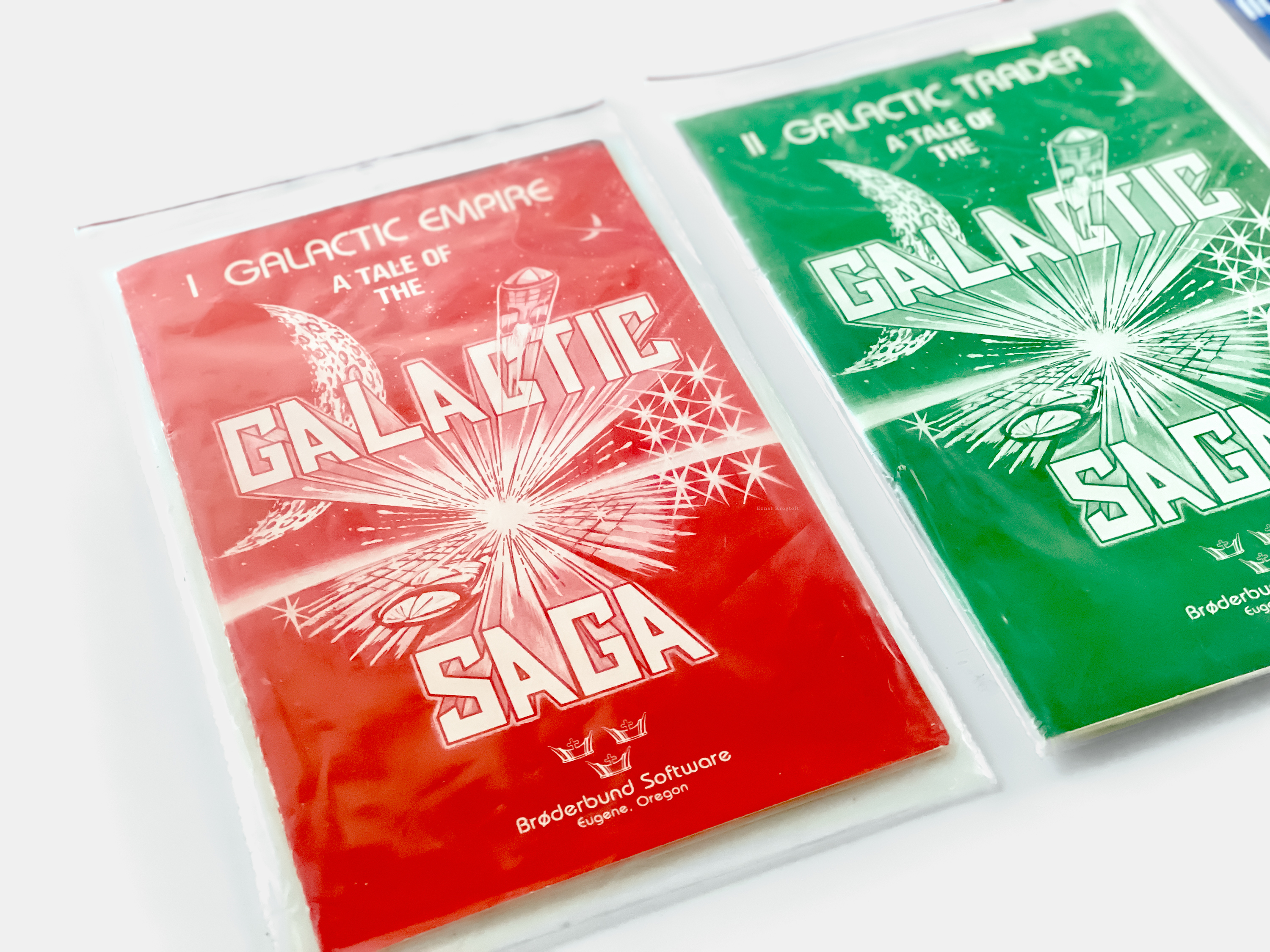
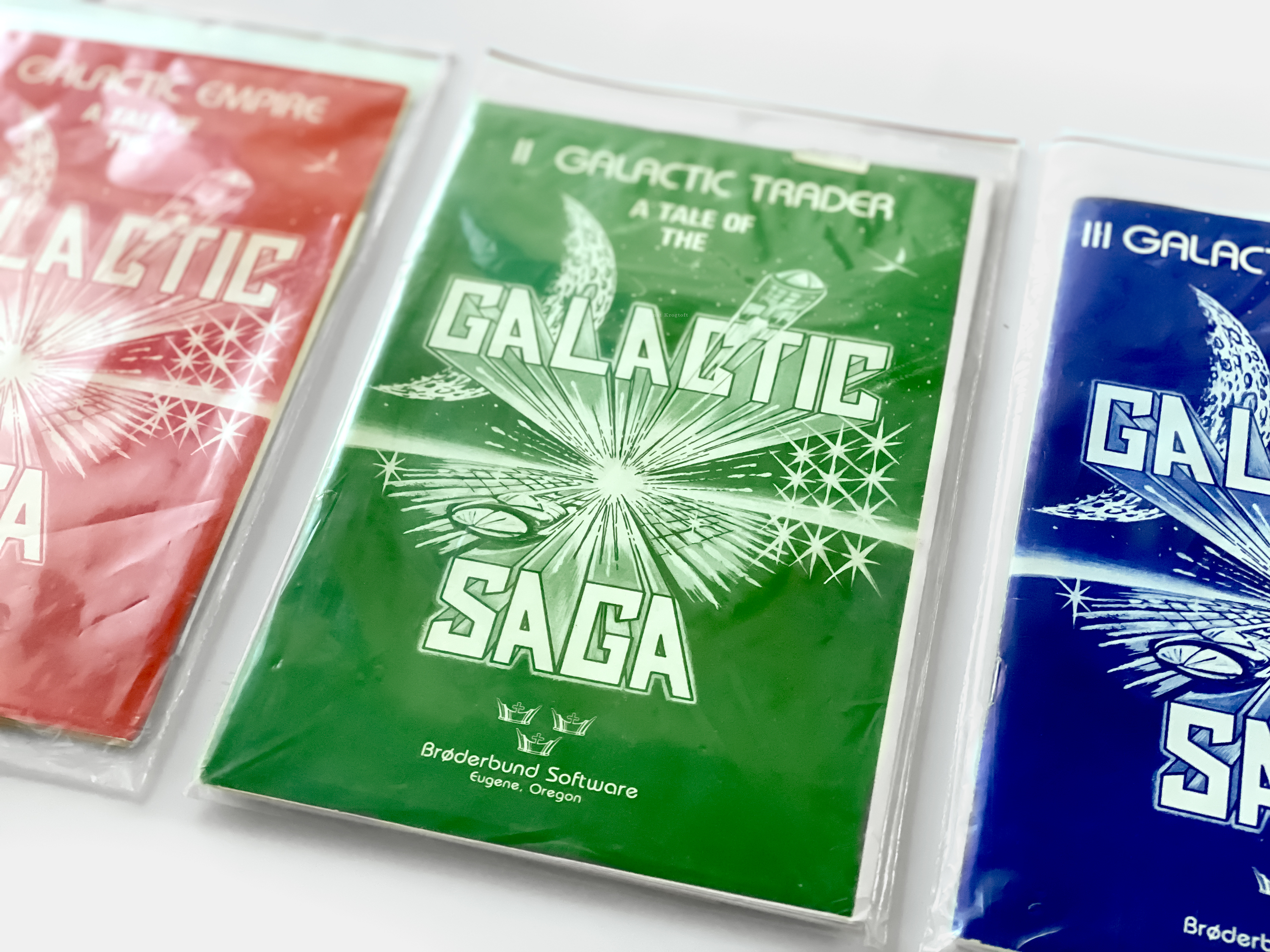

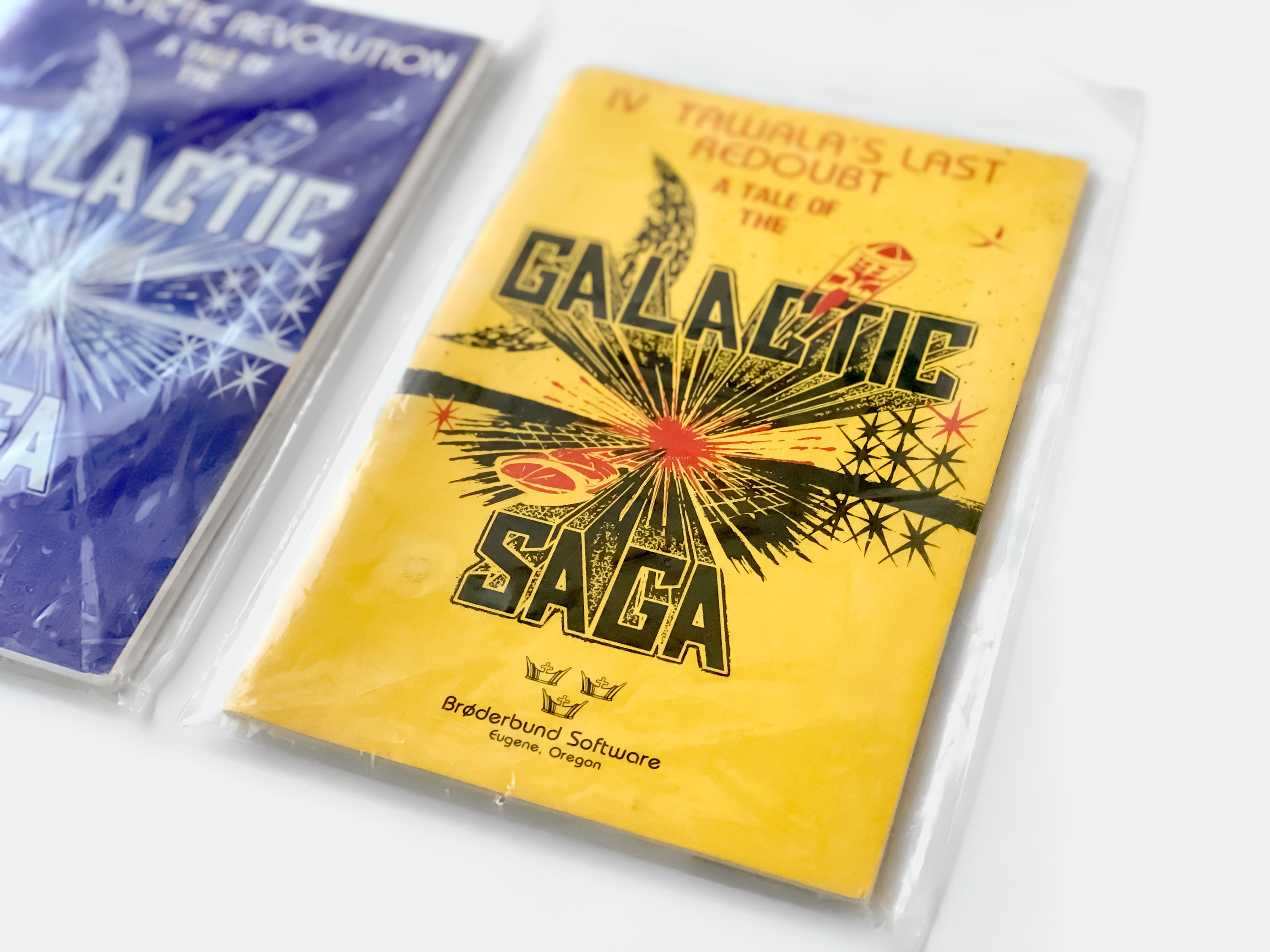

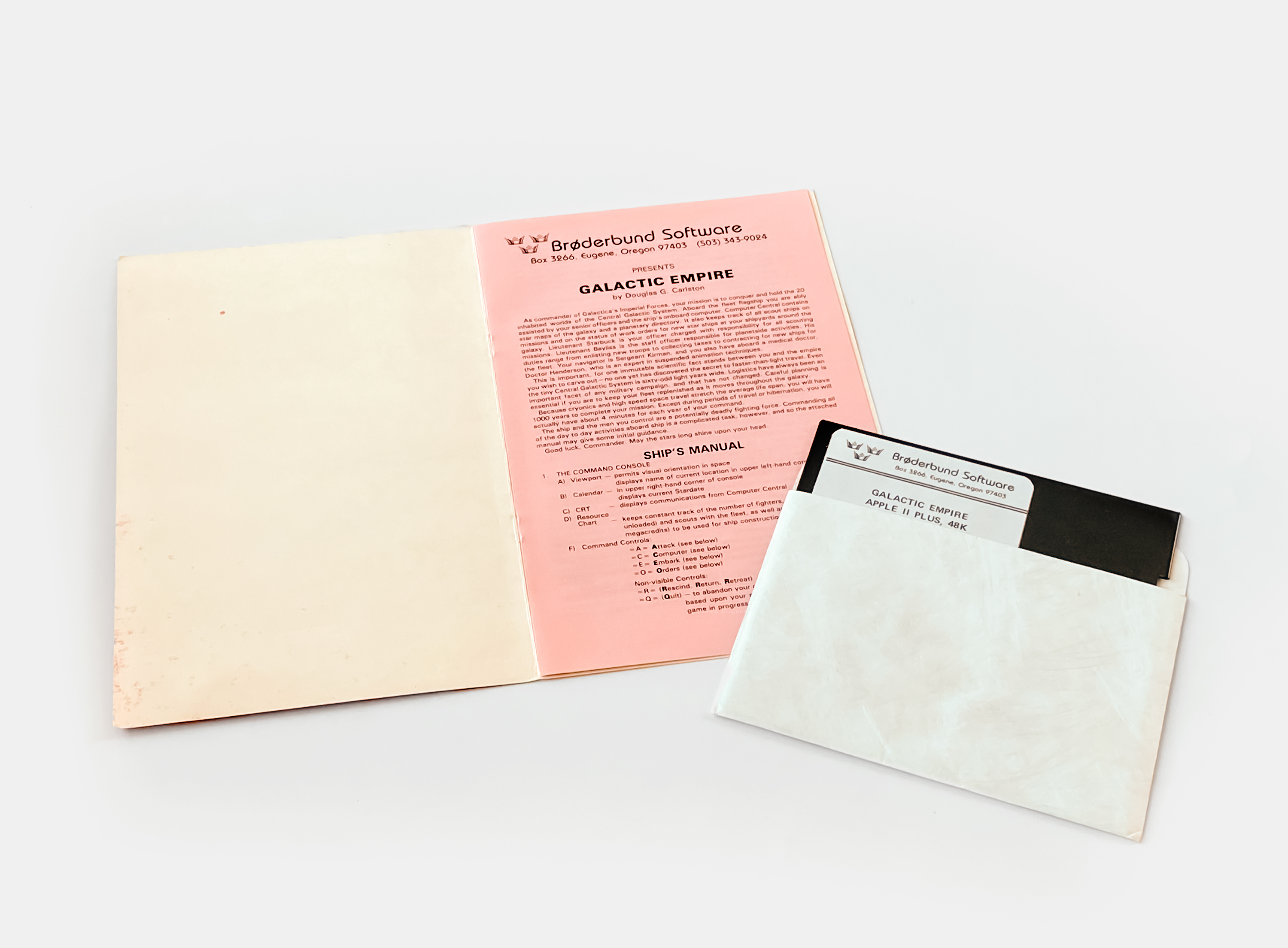

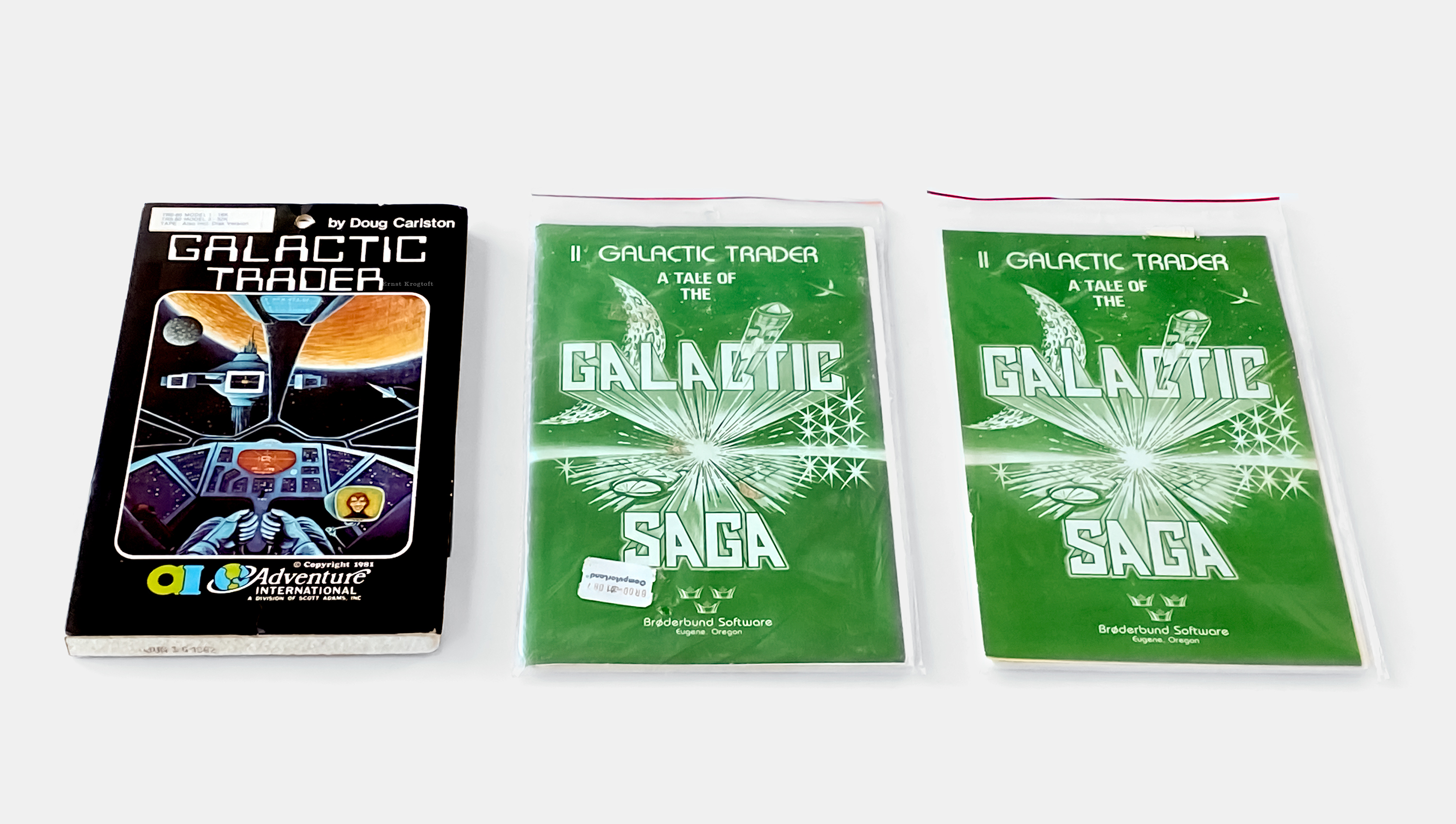
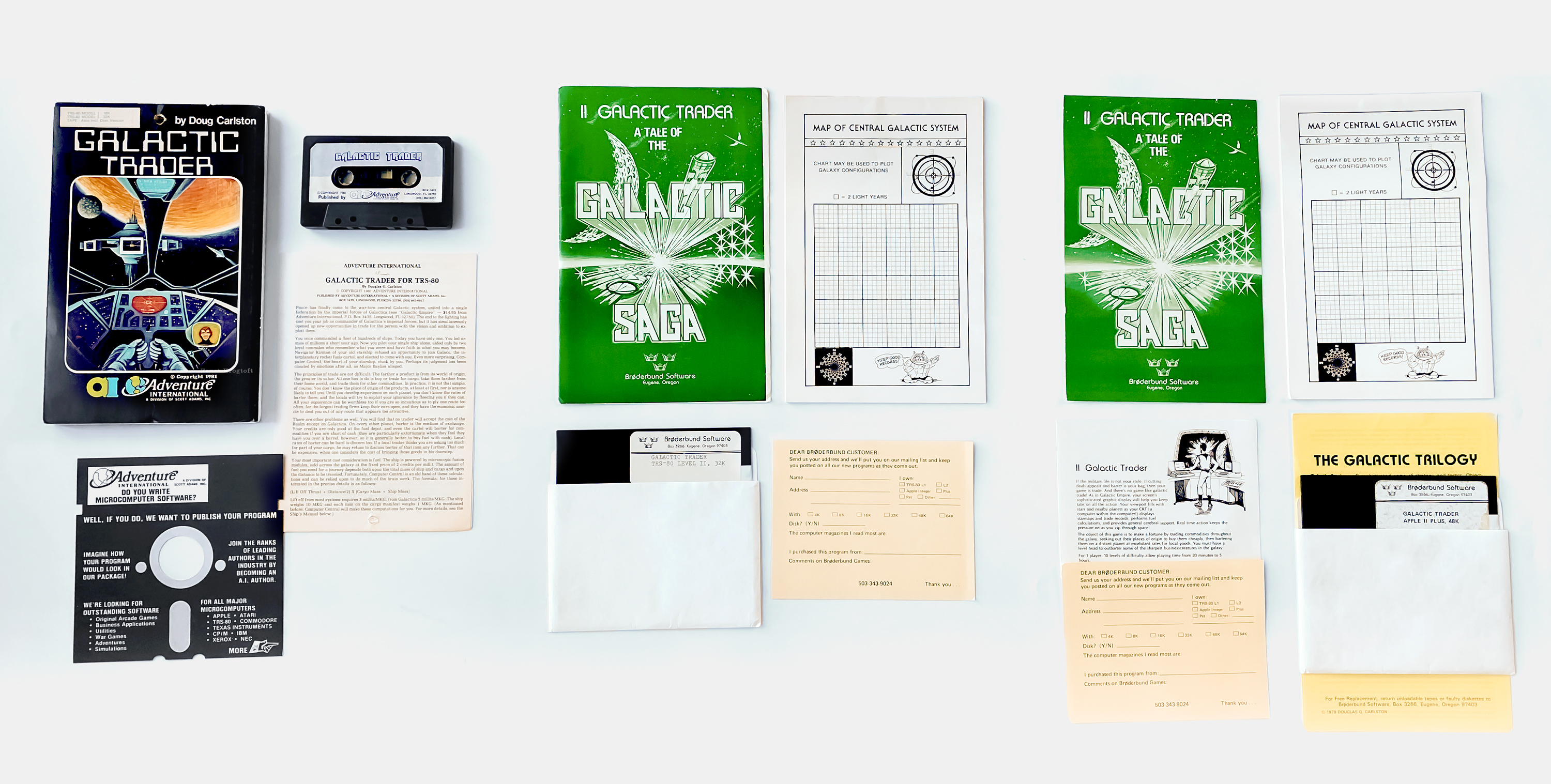

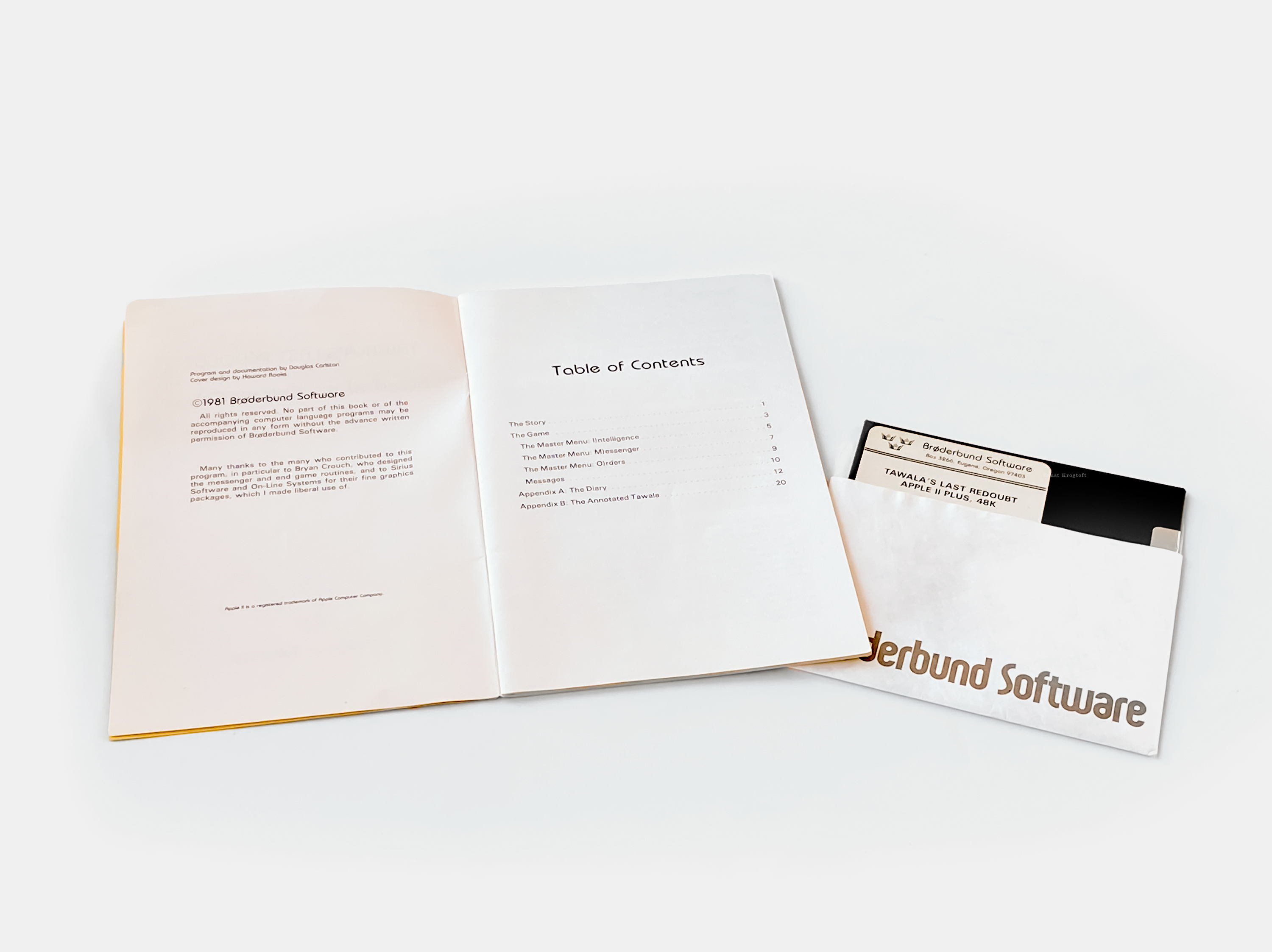


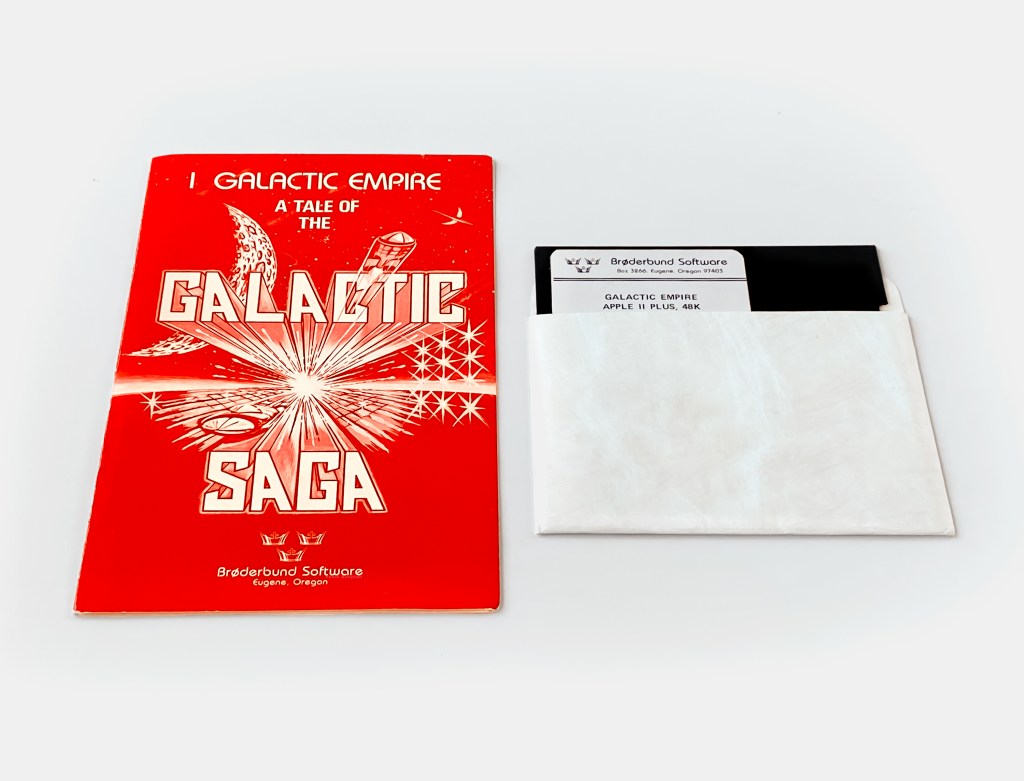



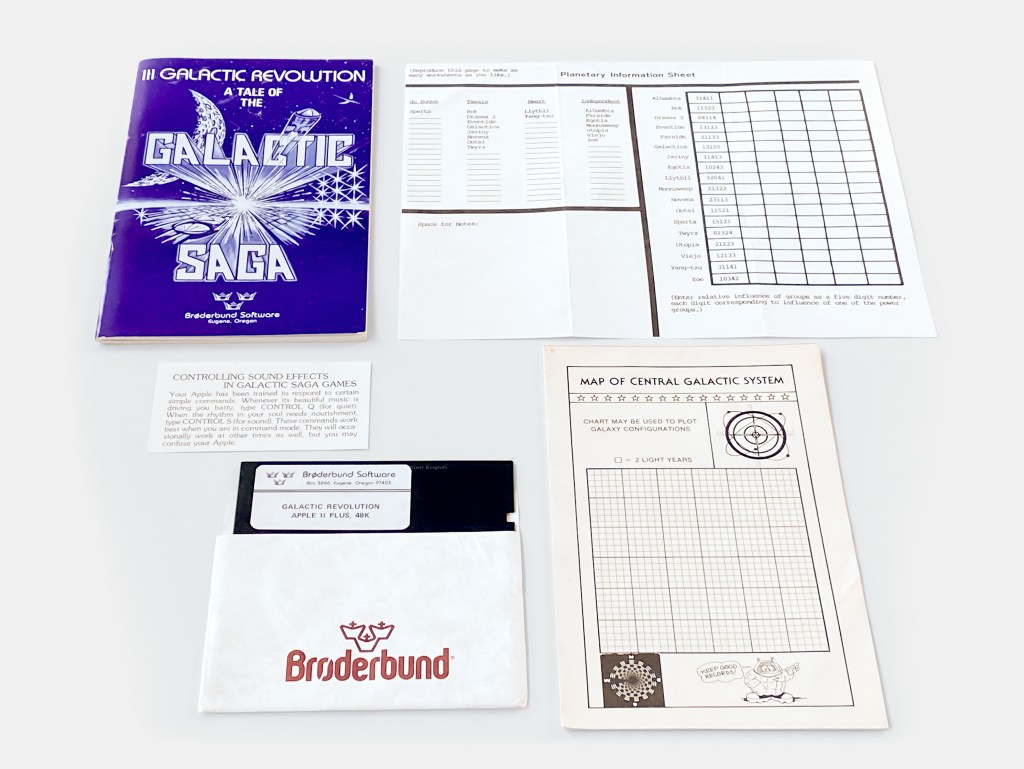

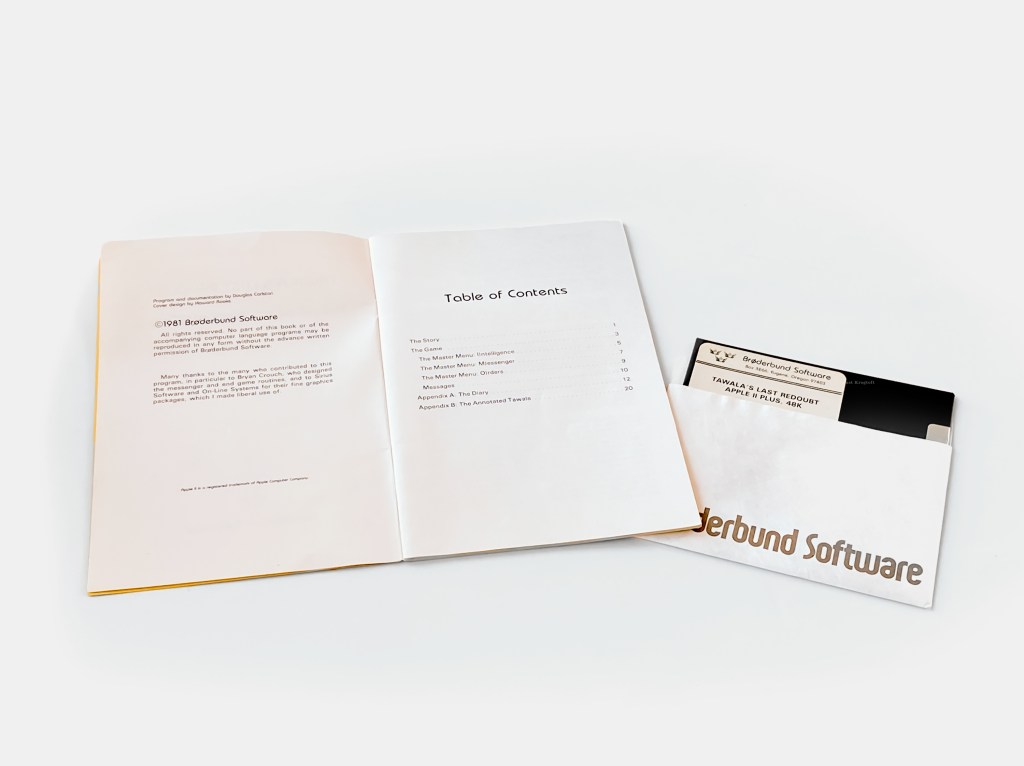
One thought on “A Saga of Galactic proportions, the birth of Brøderbund”